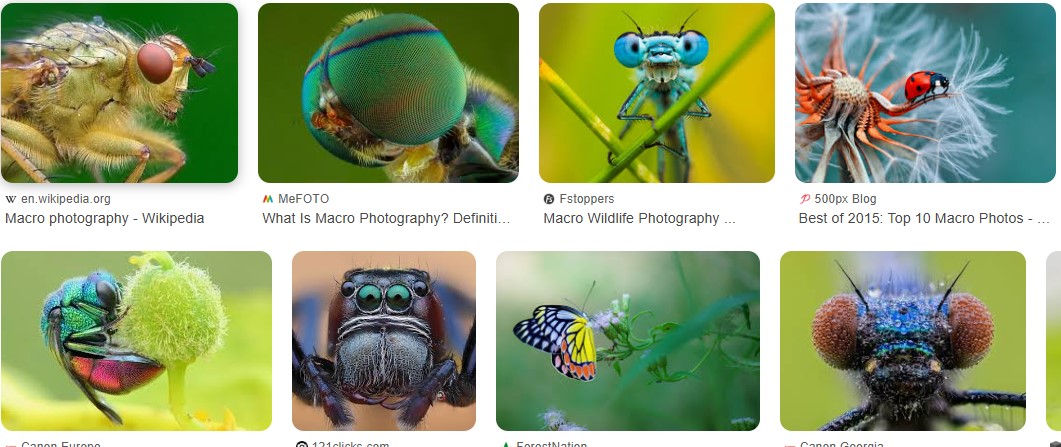Macro photography is the art of turning the invisible into the unforgettable. This stunning visual technique brings life’s tiniest subjects—flower petals, insect wings, or textured surfaces—into extraordinary focus. With macro photography, even the tiniest dewdrop becomes a crystal universe, and the eye of a dragonfly can rival the design of a spaceship.
By exploring the tiny and often overlooked details of our world, macro photography not only fuels creativity but also improves technical skills. Whether you’re using a high-end DSLR, a mirrorless camera, or even trying out iPhone macro photography, the magic lies in magnifying the ordinary into something truly breathtaking.
Macro photography refers to close-up photography where the subject appears at life-size (1:1 magnification) or larger on your camera’s sensor. This is more than just zooming in—true macro shots capture the actual texture, depth, and structure of a subject in ways the naked eye can’t see.
This genre is used not only in creative photography but also in scientific documentation, product photography, and nature exploration. When you understand macro photography’s definition and apply the right techniques, you unlock a whole world of visual storytelling—showing ordinary subjects in extraordinary detail.
Macro photography allows photographers to discover beauty in the details. A simple leaf becomes a textured masterpiece under a macro lens. A rusty screw or a piece of fabric can turn into compelling art. This style of photography lets you observe the microscopic details that tell larger stories.
Unlike other photography styles, macro photography invites viewers into a smaller, more intimate world. It emphasizes texture, contrast, and structure, making even the most mundane object feel like a new planet. In a digital world obsessed with big, macro photography says—look closer.

To dive into macro photography, you don’t necessarily need the most expensive gear, but you do need the right tools. A dedicated macro photography lens is key—these are specially designed for close focusing distances and 1:1 magnification. Look for lenses in the 90mm–105mm range for excellent results.
While DSLR and mirrorless systems offer top-tier quality, many photographers are turning to smartphones. Macro photography iPhone setups, with either built-in macro modes or clip-on lenses, have produced outstanding results for casual and creative shooters. Add in a tripod, a good light source, and perhaps some extension tubes, and you’re set for serious macro magic.
The best camera for macro photography is one that allows full manual control and high image resolution. Canon EOS R series, Nikon Z series, and Sony Alpha cameras are favorites among professionals. Look for features like focus peaking and a flip-out screen to make your job easier.
When choosing the best lens for macro photography, go for lenses that provide true 1:1 magnification. Popular choices include the Canon EF 100mm f/2.8L Macro IS USM, Nikon 105mm f/2.8G VR, and the Sigma 105mm f/2.8 EX DG OS HSM. These lenses provide sharpness, contrast, and beautiful background blur—all essential for standout macro shots.
Macro photography ideas are everywhere—once you train your eye to look small. Start with macro photography flowers, which offer vibrant colors, varied shapes, and endless detail. Try photographing the inside of a tulip or the surface texture of a sunflower for compelling results.
Explore insect macro photography by capturing bees, butterflies, or ladybugs in natural settings. Rain-soaked leaves, glass with condensation, cracked surfaces, or even textiles at high magnification can give your images a striking abstract feel. Abstract macro photography encourages creativity and pushes boundaries, turning textures into visual stories.
Sharpness is everything in macro photography, and that starts with stability. Use a tripod and consider a shutter release remote to reduce camera shake. Because of the shallow depth of field, set your aperture to f/8–f/16 for better focus across your subject.
Lighting is key in macro photography. Use natural light for a soft, diffused look or introduce ring flashes and LED panels for more control. Always experiment with angles—sometimes the best macro photo comes from flipping your subject upside-down or lighting it from behind. The beauty of macro is that there’s no one way to shoot it—just endless ways to explore it.
Macro photography presents unique challenges. Subjects like insects move quickly, and even a breeze can cause flowers to shake. Use fast shutter speeds and shoot in bursts to catch the perfect moment. Consider early morning hours when light is soft and insects are slower.
Another issue is achieving sharp focus with shallow depth. Learn to focus manually and consider focus stacking—where multiple images are taken at different focus points and merged in post-processing. Though macro photography is technically demanding, it’s also deeply rewarding. The results speak for themselves in every shimmering detail.
Once you’re comfortable, explore advanced macro techniques. Focus stacking and bracketing create razor-sharp images throughout the subject’s depth. Water droplets can act as tiny lenses, reflecting entire scenes within. Try using backgrounds with strong color contrast to make your subjects pop.
Experiment with abstract macro photography by finding patterns in everyday life. Shoot through glass, experiment with backlighting, or get extremely close to metals, fabrics, or liquids. The goal is to train your eye to see not what a subject is—but what it could look like under the macro lens.
Macro photography is more than a niche—it’s a way of seeing the world through a lens of wonder. With the right gear, a bit of patience, and a lot of curiosity, anyone can uncover a hidden world in their backyard or living room. From delicate flowers to detailed insects, macro photography offers an endless playground for artistic expression and technical growth.
As you continue exploring this captivating genre, you’ll realize that macro photography isn’t just about getting close—it’s about seeing differently. Start small, think big, and let the tiny details tell their grand stories.
What is macro photography in simple terms?
Macro photography is the technique of capturing extremely close-up images of small subjects so that they appear life-size or larger in the photo.
Do I need a macro lens for macro photography?
A dedicated macro lens is ideal for achieving true 1:1 magnification, but you can also start with extension tubes or close-up filters on a standard lens.
Can I do macro photography with an iPhone?
Yes, especially with newer models that support macro modes. Clip-on macro lenses can also significantly enhance your results.
What are the best subjects for macro photography?
Flowers, insects, textures, water droplets, and even household items make fantastic macro subjects.
What lighting should I use for macro photography?
Natural light is great, but ring lights, diffusers, and reflectors offer more control over shadows and highlights.
You may also read: Landscape Photography: The Ultimate Guide with Pro Tips & Free Resources

